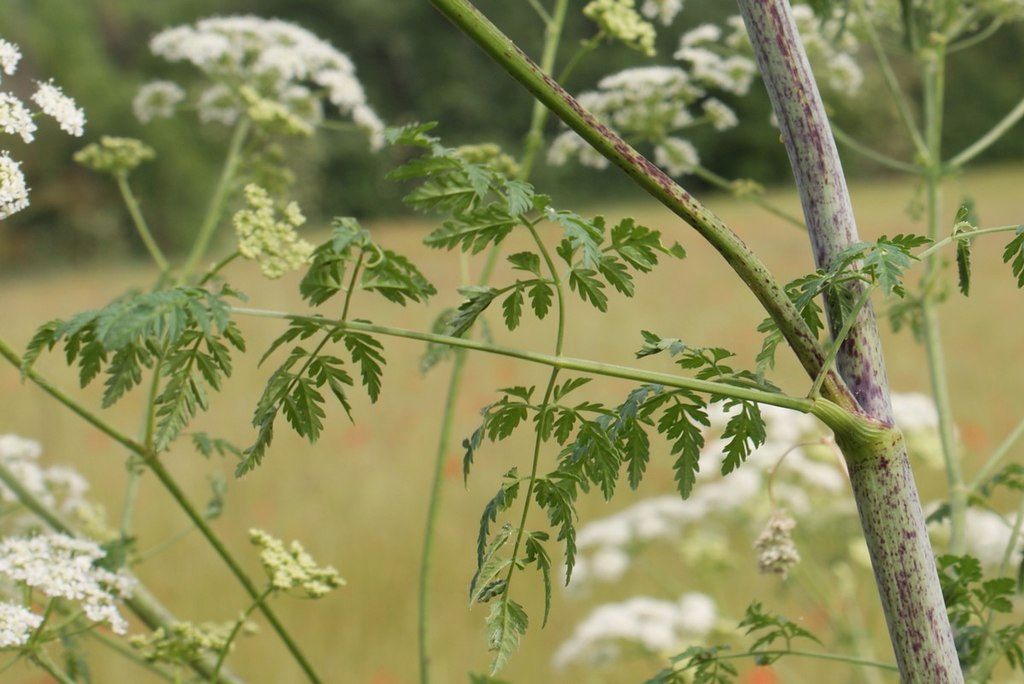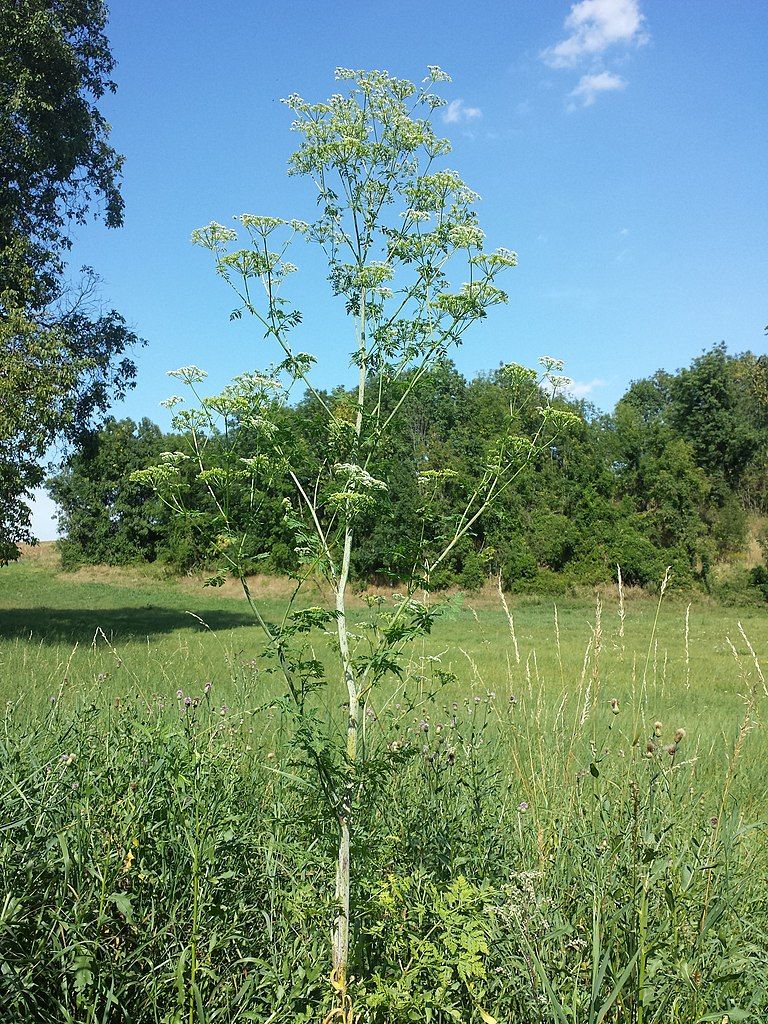26 June 2011
In my neighborhood there’s a patch of flowering plants five to eight feet tall with pretty white umbels and lacy leaves. The patch expanded this spring and is now surrounded by a carpet of tiny plants, just like the tall ones. They smell vaguely like popcorn.
From a distance I thought this was a good thing. The spot is a waste place that used to be ugly. But now the patch annoys me. I’ve identified the plants. They aren’t carrots or Queen Anne’s lace. They have purple spots on their stems. They’re poison hemlock.

Poison hemlock (Conium maculatum) is a biennial that’s extremely toxic to humans and livestock. If eaten it kills by blocking communication between the nerves and muscles. Death starts by paralysis and ends by shutting down the lungs. Poison hemlock’s most famous victim was Socrates who was put to death in Greece in 399 BC when the plant was a capital punishment tool.
Poison hemlock came here from Europe and is now considered invasive in Pennsylvania and 11 other states. At some point it was used as a sedative — perhaps that’s how it came here — but the difference between a therapeutic dose and a fatal one is so slight that it’s Russian Roulette to try it.
How do you get rid of it? Wear gloves and chop it down when it’s in full flower before it’s gone to seed (early June in Pittsburgh). Put the chopped plants in a sealed garbage bag and let them bake in the sun to kill them. Click here and here for tips on how to identify and remove poison hemlock.
Because poison hemlock is biennial, do this two years in a row and the plants will be gone unless … If the hemlock patch has been there a while, the soil is full of poison hemlock seeds and will sprout new plants every year. Don’t pull them or use herbicide. Those activities disperse the seeds and make things worse. With an old patch of poison hemlock you’ll have to chop it every year for a good long time.
Learn to identify poison hemlock. The purple spots are a dead giveaway.
It’s best to know what you’re dealing with.
(photos from Wikimedia Commons; click on the captions to see the originals)

Had this a few years back in the yard….it kept growing and growing and growing…once I finally figured it out, I dug it out and got rid of it…anything like this, always get it before it goes to SEED otherwise you will have more and more everywhere…Got it before it got ahead of me…whew!!!!
Scary! I just went and double-checked the weeds I’ve seen out in my backyard: no purple splotches, and fuzzy stems/leaves, so Queen Anne’s Lace. Whew!
Hmmm. Maybe I should behead those plants so they can’t go to seed. But where to throw them out…?
For disposing of the flower/seed heads, the best option is to put in the trash for the landfill.
When I dug them up, I cut them down first and chopped and like Mark suggested, put them in the garbage…I do this with many of the invasive plants like garlic mustard, canada thistle and other things..I like to let the sun burn them first, either in a garbage bag or on the driveway in the hot sun…then throw away…less likely to grow later. I am sure I wore gloves and long sleeved shirt and long pants…didn’t want anything touching me…if you behead, they will sprout more branches and more seed heads…can you contact the park and see if they will dig it out…not ROUND UP?
And Rachel….I keep the Queen Anne’s lace OUT of the garden and give it it’s own space..it reseeds everywhere, but a great flower to put in food coloring to change color and also the host plant for the black swallowtail butterfly…
It arrived in my yard a decade ago from a truckload of mulch. First year I thought it was some pretty fern. As a biennial, that’s how it starts off. Imagine my surprise when the pretty ferns grew 8 feet tall the next year. Now I yank them out by hand, and so far I haven’t been poisoned (or maybe I have been, but its been the “therapeutic” dose?)
I just learned about giant hogwort, another invasive and very toxic. It looks similar to poison hemlock and Queen Anne’s lace and is now found in Pennsylvania. The giant hogwort can reach 5- 12 ft tall, out competes natives, and of course reseeds far better than natives. Another trait is its sap causes long lasting scars because a phytophotodermatititis reaction. PA DCNR and Penn State Extension have information sheets.
Hope they get to it before it goes to seed